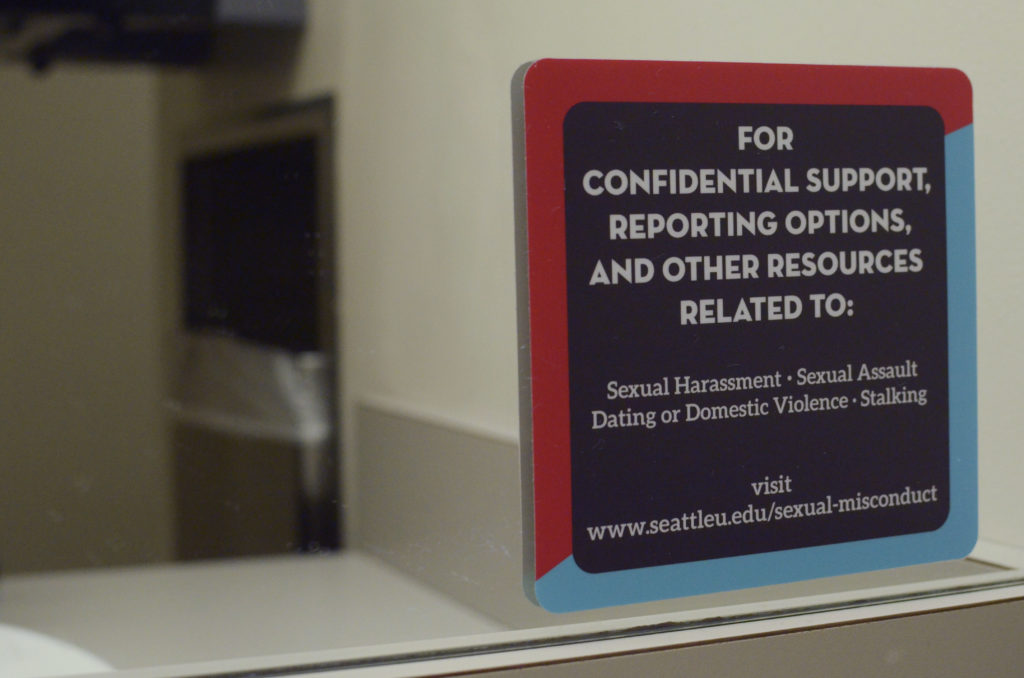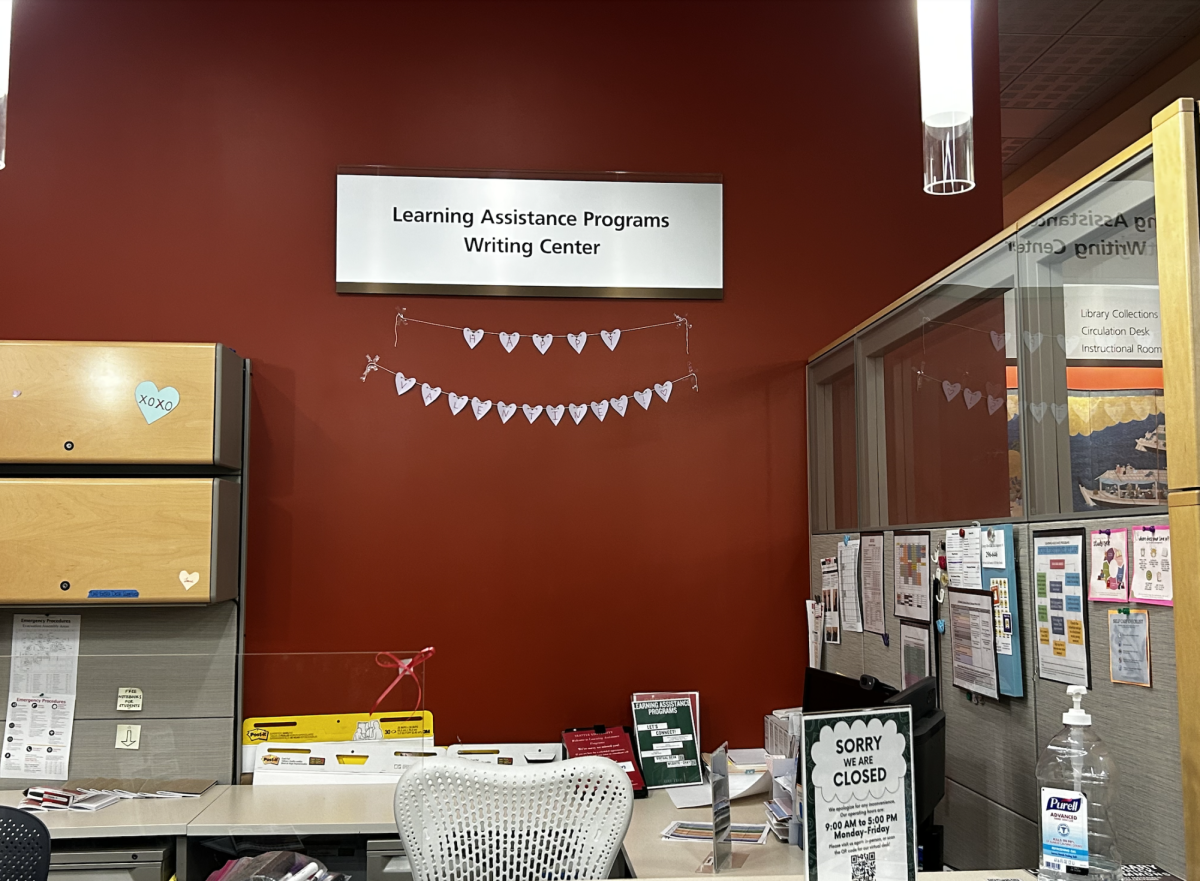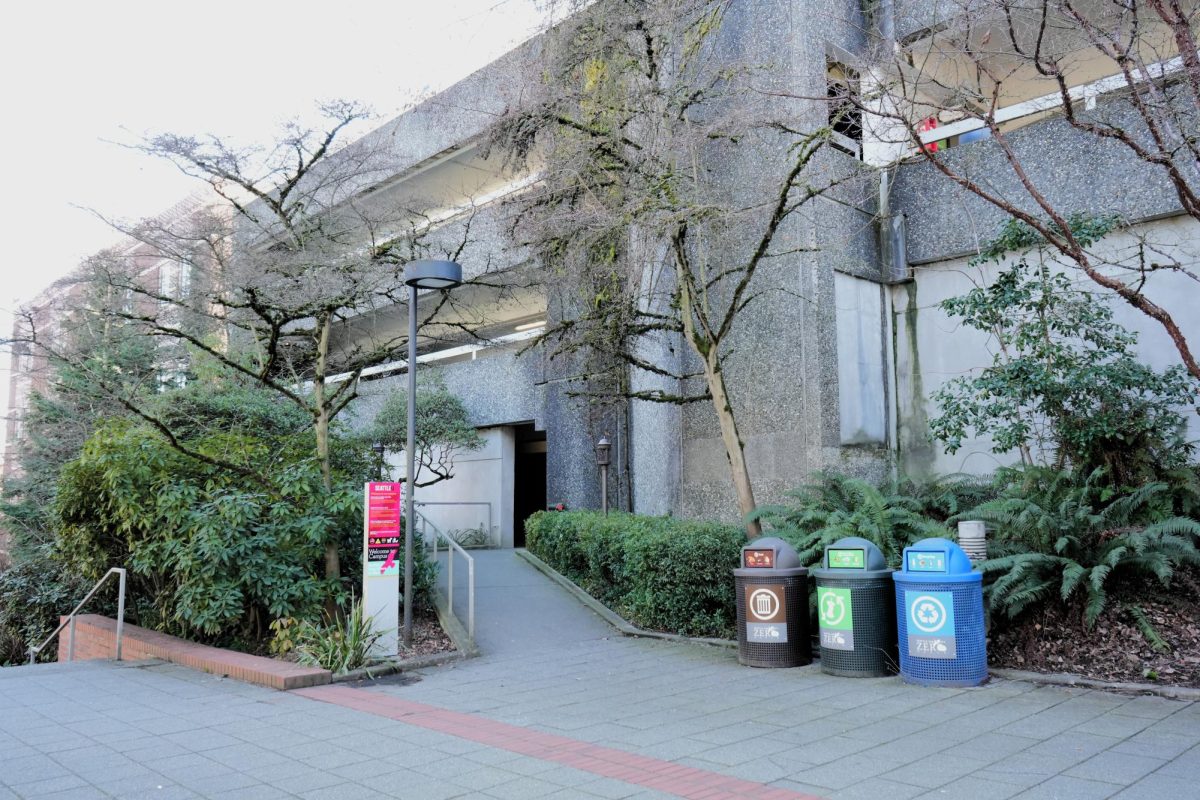Have you noticed the black, square stickers posted on bathroom mirrors across campus? As of Feb. 1, the stickers were posted to the nearly 300 bathroom mirrors in every single restroom across the Seattle University campus.
These adhesive signs direct students to the Dean of Student’s sexual misconduct support website. According to Ryan Hamachek, the Director of the Health and Wellness Center (HAWC), the stickers are meant to address the question: “How do we make more and more visible to campus the resources, access to reporting and confidential support?”
The stickers do not bear the names of their creators or information on who is involved in the reporting and support processes of sexual misconduct situations.
Hamachek specifies that the “we” includes administration from HAWC, the Dean of Students the Office of Institutional Equity and “anyone who cares about sexual violence,” he said.
In addition, students were involved and participated in the creation of the sticker’s design format. The current sticker design featuring a URL was chosen because it was the most money, time and resource-efficient.
Some have asked why bathrooms were chosen as the locations of these stickers. Those who created them chose bathrooms because they offer privacy and typically do not feature a lot of advertising. Students can take a picture of the sticker, type in the URL or memorize it for later to look at resources on their phones.
Ash Vera, president of Student Survivor Network, raised concerns with people being outed as a result of others in the bathroom seeing them photograph the sticker. This could lead to a loss of anonymity, Vera said.
“When you’re someone who’s gone through trauma like this…it’s a difficult thing to read, but you also feel very self-aware of who else is in the room with you,” she said, adding that stickers in the bathroom stalls might be a way to eliminate this issue.
During the sticker’s formation process, the Gender Justice Alliance— which was once a part of the sticker- creation process—decided they no longer wanted to be affiliated with them.
The sticker’s actual website— listed on the sticker—focuses on the reporting process of sexual misconduct incidents.
On the site listed on the stickers, the university’s commitment statement expresses its reporting policy:
“All Seattle University faculty and staff are required to report incidents of sexual misconduct to the Title IX Coordinator.”
The policy is more accurately described as a notification requirement in which all Seattle U staff and faculty are required to notify the Office of Institutional Equity (OIE) about students who confide in them regarding sexual misconduct.
This initial contact does not necessarily lead to a formal report and students may choose not to begin an official investigation. The purpose of the notification requirement is to provide students with support and resources to ensure that they are able to continue their education. The website also provides a chart of the confidentiality, support services and contact information of various resources available primarily on campus.
The mandatory reporting policy and reporting process have been considered vague and ineffective for some. Mandatory reporters include all Seattle U staff and faculty except for those working in Counseling and and Psychological Services (CAPS), Campus Ministry and the Student Health Center.
There are also students who are required to notify OIE if they hear of incidents regarding sexual misconduct during their time. These include Residential Assistants (RA), housing staff members on duty and Public Safety student employee. If and when a formal report is made, the average timeline should last around 60 days after the initial complaint, but may be more or less.
The New Faculty Institute—where new hires at Seattle U receive training every few months—does provide new faculty and staff with training on how to interact with students who have experienced sexual misconduct and the notification requirement. Those who are not as equipped to administer these misconduct situations do have lists of resources and OIE to which they can refer students, but some say there could be more opportunities for training to prepare these members of the university.
“If you are a working on a college campus … and you have a run-in with a student who has experienced some kind of trauma, you need to be able to respond to that in a professional and empathetic way,” Vera said in regard to what she cites as a demand for more faculty training. “I think it’s just being there for the student, actually being a person that they can rely on without fearing any kind of improper language.”
For the future of addressing and preventing sexual violence, Hamachek hopes that “we become a campus free of sexual misconduct.”
Elise may be reached at
ewang@su-spectator.com









